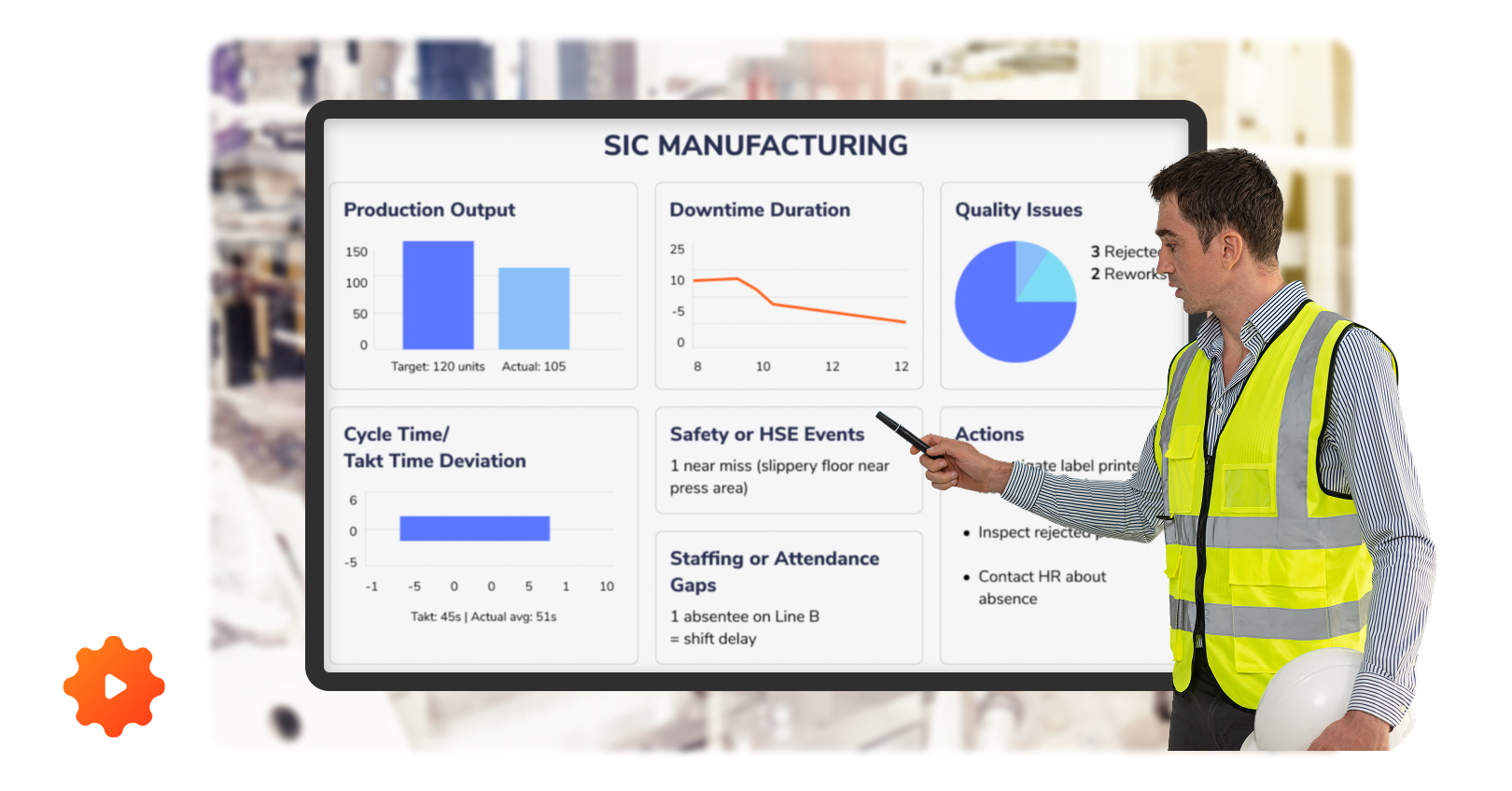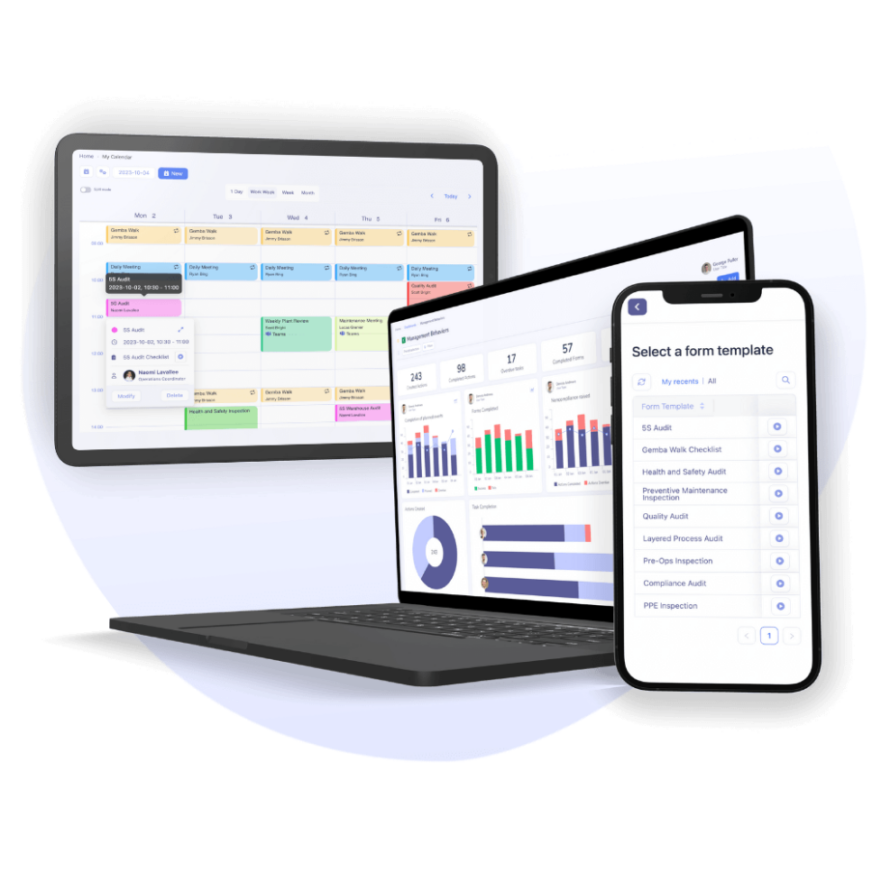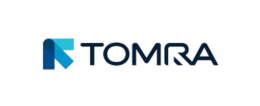Tiered Meeting Structure: How to Build Effective Communication Layers

| Audience: | Manufacturing Managers, Healthcare Administrators, Operational Excellence and Lean Management Practitioners, HR Coordinators, Organizational Leaders |
| Last updated: | August 20, 2025 |
| Read time: | 12 mins |
- Tiered meetings: These short, focused meetings involve different organizational layers to ensure efficient information flow and team decision-making.
- Benefits of tiered meetings: They streamline communication, break down silos, and facilitate collaboration between departments to improve operational efficiency.
- Digital tools: Digital solutions can further enhance the tiered meeting structure by enabling easy information sharing, standardization, and real-time visibility into meeting outcomes and task progress.
Whether it’s to break down silos between support groups or to escalate problems to top-level management, meeting structures support daily operation management. However, many structureless meetings cause time losses in leaders’ daily routines.
In fact, a Harvard Business Review study shows meetings are now longer and more frequent than ever. Executives spend nearly 23 hours a week in them – more than double the time in the 1960s. CEOs average 37 meetings a week, VPs and senior leaders 12–17, and even junior employees attend around 10.
Implementing a tiered meeting structure is the most effective method to prevent such inefficiency

What are Tier Meetings in Manufacturing? Tiered structure meaning
Tiered meetings are short, engaging sessions that gather members at each organizational layer (Tier 1, Tier 2, Tier 3). This structure solidifies the communication cascade between team leaders, supervisors, managers, and executives. It helps align team efforts with overarching objectives, review performance, make decisions, and address issues correctly. These meetings stand out for their swift, often stand-up nature, typically lasting between 10 and 30 minutes.
Conveniently held close to the frontlines, tiered meetings ensure relevant and action-oriented discussions. They usually involve clear agendas, trackable tasks for enhanced accountability, and visual aids such as boards or charts.
What are the 4 Ps of Meetings (Purpose, Product, People, Process)
If you want meetings that actually work, focus on the 4 Ps. They’re simple, practical, and keep everyone on track.
Start with Purpose. Every meeting should have a clear reason to exist. Ask yourself: What are we trying to achieve here? If you can’t answer in one sentence, rethink the meeting.
Next is Product. Think of this as the outcome. Do you want decisions, next steps, or just information shared? Define what success looks like before you walk in.
Then comes People. Invite only those who add value or need to be in the loop. Smaller groups often mean faster, better conversations.
Finally, Process. This is how the meeting runs. Create an agenda, set time limits, and agree on how to capture action items. A simple process prevents wasted time and keeps things moving.
What is an example of a Tiered Meeting Structure (Tier 1–3, Tier 4 optional)
Think of a tiered structure like layers in a pyramid. Each layer has its own focus, and together they keep everyone moving in the same direction. You don’t need a complicated system, just a clear rhythm that connects daily work to big-picture goals.
Here’s a simple example:
- Tier 1: Daily check-ins: Short, 15-minute standups, like daily huddles. The goal is to share updates, flag blockers, and keep momentum going.
- Tier 2: Weekly team meetings: A little longer. You review progress, align priorities, and make quick decisions. Everyone leaves knowing what matters most that week.
- Tier 3: Monthly leadership reviews: This is where leaders step back, look at trends, and adjust strategy. They connect what’s happening on the ground to larger goals.
Notice how each tier builds on the one below. Daily check-ins feed into weekly team discussions. Weekly team discussions roll up into leadership reviews. Nothing gets lost, and everyone stays aligned.
To make this even easier in practice, digital tools like Tervene can standardize the flow, reduce admin work, and keep accountability clear.
Every organization shapes its meeting structure to fit its unique needs based on industry demands, management hierarchy, and operational complexity.
What is a tier 4 meeting?
For example, a global manufacturing company might have up to four levels of meetings from all organizational layers (team leaders, supervisors, mid-level managers, and senior executives).
In contrast, a small to medium-sized manufacturing business may only have two meeting levels, where supervisors work directly with the management team. Many organizations also use Standard Operating Procedures (SOPs) to keep these meetings consistent. SOPs provide simple guidelines for agendas, roles, and follow-ups, so every meeting runs the same way no matter who’s leading it.”
A tiered meeting structure aligns decision-making with the appropriate management level to ensure discussions are relevant to participants’ roles and hierarchical positions. This structure facilitates efficient information transfer throughout the organization. At each level, issues are addressed in a timely manner pertinent to that tier’s focus. For example:
1. Simplifying the communication cascade across management levels
Digital tools like Tervene enable efficient information transmission between various management levels. For instance, a team leader can flag a factory floor issue, discuss it in a production meeting, and receive prompt feedback. Updates can then be rapidly escalated to higher management, such as executive committees, for further action.
2. Facilitating team connection in a mobile, paperless setting
A digital solution connects all the organization’s teams in a paperless environment. It breaks down silos in such a way that the frontline managers can easily share information with the support groups. For example, it streamlines the communication between the supervisor, the safety manager, and the engineering team.
3. Improving Leader Standard Work (LSW)
Digital management systems are fundamental in simplifying mid-level managers’ daily operations. These systems significantly reduce administrative burden by minimizing the need for word-of-mouth communication, manual transcription, and paper-based analysis. This efficiency boost strengthens Leader Standard Work and enables managers to conduct more effective daily, weekly, and monthly meetings.
4. Standardizing meetings and shift handovers
Digital meeting solutions offer leaders a structured framework for organizing meetings and shift handovers. This standardization is why global manufacturers like Safran, Lactalis, and Cascades adopted digital tools.
5. Gaining meeting transparency with real-time visibility
Digital tools significantly improve the transparency of meeting minutes by detailing task ownership and due dates associated with every participant. They enable leaders to track progress effectively in real-time, even between scheduled meetings. Integrated solutions promote a heightened accountability and responsibility culture to keep all participants up-to-date about their tasks and deadlines.
How to set up a tiered meeting structure? Tiered meeting templates and examples
Building a tier meeting system doesn’t have to feel overwhelming. Start small, focus on clarity, and layer structure step by step.
First, assess your current meeting landscape. Look at what meetings already exist, who attends, and what decisions get made. Ask yourself: Which meetings feel redundant? Where are decisions stalling? This gives you a baseline to work from.
Next, decide how many tiers make sense for your organization. Most companies work well with two or three levels:
| Tier meetings | Focus | Frequency | Who attends | Main output |
| Team-level | Daily problem-solving | Daily | Team members | Issues fixed or escalated |
| Department | Updates + escalations | Weekly | Mid-level managers + team leads | Progress, resource needs |
| Executive | Overall business strategy + alignment | Bi-weekly | Senior leadership | Priorities, big decisions, strategic goals |
Don’t overcomplicate it. Choose the minimum number of tiers that cover your needs.
Then, define the objectives and scope for each tier. For example:
- Team-level → fix issues quickly and escalate what can’t be solved
- Department-level → review progress, share resources, and decide on escalations
- Executive-level → prioritize, allocate budgets, and resolve big roadblocks
Clarity here prevents overlap and keeps people focused.
Once you know the purpose of each tier meeting, create standard agendas. Keep them short and repeatable. A typical flow is: review key metrics, address issues, decide actions, and confirm escalations.
Alongside agendas, set up clear escalation protocols. Everyone should know what gets raised, when, and to whom.
By following these steps, you’ll move from scattered, overlapping meetings to a clean system that saves time, reduces confusion, and speeds up decision-making.
Now that you’ve mapped out the structure, the next challenge is making sure your teams know how to use it. A system only works if the people in it are confident and prepared.
How do you train your teams for success?
A tier meeting structure only works if your teams know how to use it. Training doesn’t have to be formal or heavy. Keep it simple, practical, and focused on habits:
- Onboard leaders and participant: Walk them through the format so they feel confident from day one.
- Explain the purpose of each tier meeting: Make the “why” clear so people focus on the right topics.
- Clarify attendance: Define exactly who should be in the room to keep discussions relevant.
- Show the information flow: Keep handoffs simple so everyone knows what goes where and to whom.
- Use cheat sheets: One-page guides remind people of roles, responsibilities, and processes.
One page is usually enough to remind everyone of roles, responsibilities, and key processes, with a solid plan to implement everything. These quick references help participants feel confident and reduce the chances of mistakes. For example, in aerospace, tier 1–4 meetings align shop floor safety checks directly with executive KPIs, making sure frontline risks connect to top-level priorities.
To keep engagement high, make meetings feel valuable. Stick to clear agendas, start and end on time, and focus on solving problems. Call on quieter voices, celebrate small wins, and make sure actions are tracked. People stay engaged when they see meetings actually help them.
Training gets everyone started on the right foot, but habits fade without care. Let’s look at how to keep your meetings sharp, focused, and worth everyone’s time.
How do you keep a tier meeting productive over time?
Productive meetings don’t happen by chance. They stay effective because you keep checking in, adjusting, and improving. Think of it as tuning an instrument – you need regular tweaks to keep things sounding right.
Here’s how to keep your meeting structure effective:
- Check the basics: Review attendance – are the right people showing up? Then look at action completion rates. Low follow-through signals unclear ownership or weak accountability.
- Rotate facilitators: A fresh voice keeps energy up and prevents meetings from going stale. You’ll also discover facilitation styles that may work better for the team.
- Audit the agenda: Cut outdated or low-value items, add what’s useful, and make sure every topic earns its spot.
Also, consider trying the 40/20/40 rule: dedicate 40% of the effort to preparation, 20% to the meeting itself, and the remaining 40% to follow-up.
What is the 40/20/40 rule for meetings?
The 40/20/40 rule is a simple way to run better meetings. It says the work splits into three parts:
- 40% preparation: Plan the agenda, set goals, and share materials ahead of time.
- 20% actual meeting: Use the time to discuss, decide, and solve problems (bring a clear understanding). Not to catch people up.
- 40% follow-up: Send notes, track actions, and make sure decisions turn into results.
When you follow this rule, meetings feel shorter, sharper, and more useful. You’ll avoid wasted time and keep energy focused where it matters most.
Finally, keep the feedback loop open. Ask participants what’s working and what isn’t. A quick pulse check at the end of a meeting can reveal a lot. Encourage honest input, then act on it.
By tracking, refreshing, trimming, and listening, you’ll make sure your meetings stay sharp and worth everyone’s time.
Of course, keeping daily and monthly meetings productive is only part of the challenge. Teams also need to adapt when working remotely or in hybrid settings. So, what happens when your team isn’t all in the same room?
How do you adapt tier meetings for remote or hybrid teams?
Adapting tier meetings for remote or hybrid teams isn’t complicated. It just takes some smart tweaks. The goal is to keep everyone connected, no matter where they are.
Start with video conferencing. Pick a reliable platform and use it consistently so no one’s fumbling with new tools. Keep cameras on for the main discussion tiers to build trust and make communication feel natural.
When you’ve got both in-person and virtual participants, make them feel equally included. Use one screen and microphone for the room to avoid “side conversations” the remote folks miss. Assign a meeting “host” to watch the chat and bring in remote voices.
For brainstorming and updates, digital whiteboards and shared dashboards are your best friends. Tools like Tervene let everyone contribute in real time, and they keep notes visible after the meeting.
Here are a few features that make these tools so useful:
- Real-time collaboration: Everyone can add notes, ideas, or updates at the same time.
- Visible action tracking: Decisions and tasks stay in front of the team until they’re done.
- Shared dashboards: Progress and metrics are always up to date and transparent.
- Centralized documentation: No need to chase meeting notes, everything’s in one place.
- Easy handoffs: Escalated issues can be passed clearly from one tier to another.
- Access anywhere: Remote and in-person teams see the same information instantly.
Time zones can get tricky. Rotate meeting times if your team’s spread across continents, or record key tiers for those who can’t attend live. Share a quick summary afterward so no one’s left guessing.
A few smart adjustments mean your tiered meetings can run just as smoothly online as they do in person, maybe even better.
Once your meetings run well in any setting, the next question is whether they’re actually making a difference. That’s where measuring impact comes in.
You’ll want to track results, not just routines.

How do you measure the impact of tiered meetings?
If you’re running tiered meetings, you want proof they’re working, not just a good feeling. Measuring impact keeps your process sharp and shows the value to your team and leaders.
Here are a few things you can track
| What to measure | How to track it | Why it matters | Example | Benchmakrs |
| Operational KPIs | Link meeting actions to delivery, quality, or cost metrics | Shows if meetings move real business outcomes | Reduce defects by 10% in 3 months | 5–15% improvement per quarter |
| Problem resolution speed | Track time from Tier 1 issue to Tier 2 or 3 resolution | Faster fixes prove the system is responsive | Cut resolution time from 10 days to 4 | 50% faster resolution within 1–2 months |
| Team alignment & engagement | Use short surveys after meetings | Reveals clarity, morale, and contribution | “Do you feel clear on priorities?” | 80%+ positive responses |
| Reporting & insights | Use dashboards, trackers, or spreadsheets | Keeps progress visible and builds accountability | Dashboard of open vs. closed actions | 90% of actions tracked and closed on time |
Measuring impact isn’t about creating more work. It’s about making sure the time you spend in meetings actually pays off. With the right metrics, you’ll see that your tiered meetings save time, solve problems, and keep the team aligned.
Tracking impact gives you proof of progress, but it also reveals where things can go wrong. Before we wrap up, let’s talk about the pitfalls you can dodge from day one.
What are the common mistakes to avoid?
Even with the best setup, meetings can slip into bad habits. The good news is you can spot the traps early and steer clear of them. Let’s walk through the big ones:
Forgetting follow-up: Capture decisions, assign owners, set deadlines. Review progress in the next meeting so actions don’t vanish.
Letting meetings drift: Start and end on time. Watch the clock. If a topic needs more, park it for another session. Respect people’s time.
Skipping tiers or blurring roles: Each tier has its purpose. Keep strategy at the top, daily operations at the bottom. Don’t mix them up.
Bloated agendas: Don’t pile on extras. Ask: Does this belong here? Stick to what matters most for the group. Less is more.
FAQ about Tiered Meetings
Tiered meetings are a series of short, focused meetings held at different management levels (Tier 1, 2, 3) to improve communication, decision-making, and problem-solving across an organization.
- Tier 1: Frontline managers and workers discuss daily operational issues.
- Tier 2: Middle managers and support groups address more complex problems and coordinate between teams.
- Tier 3: Top management focuses on strategic decisions and long-term goals.
- Streamlined Communication: Ensures information flows efficiently across all levels of the organization.
- Improved Collaboration: Breaks down silos between departments and encourages cross-functional teamwork.
- Enhanced Decision-Making: Enables faster and more effective decision-making at the appropriate level.
- Increased Efficiency: Reduces time wasted in unproductive meetings and promotes a culture of accountability.
Digital tools can streamline the tiered meeting structure by:
- Facilitating information sharing and collaboration before, during, and after meetings.
- Standardizing meeting agendas and processes for consistency across teams.
- Providing real-time visibility into meeting outcomes and task progress.
- Assess your current meeting practices and identify areas for improvement.
- Define clear objectives and agendas for each tier of meetings.
- Choose appropriate digital tools to support collaboration and communication.
- Train managers and employees on the new meeting structure and expectations.
- Monitor and evaluate the effectiveness of the tiered meetings and make adjustments as needed.
Yes, tiered meetings can be adapted to suit the needs of organizations of all sizes and industries. Smaller organizations may have fewer tiers, while larger organizations may have more.






























